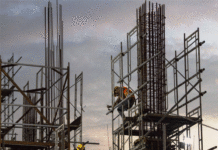New Delhi, October 29, 2016: When the real estate market in India was booming a few years ago, there was development of new projects, increased sales and potential demand rise. Slowly this trend started diminishing and today there is a downturn in Indian real estate market. The rates of properties were quite affordable from 1995 to 2006 in India. There were massive infrastructure developments in terms of building metro, bus services, roads, flyovers, etc, taking place in every city of India. Such infrastructure developments along with new residential and commercial projects led to an increase in property prices and boosted the market sentiment among the homebuyers, significantly.
The real estate business, underwent, a major change post global liquidity crisis. Prior to the crisis, the developers bought land and launched many projects. At that time, there was not much issue with the completion of projects. According to a consulting firm’s report, the developers continued with this practice and acquired huge land parcels by leveraging their balance sheets. With the liquidity crisis, construction finance got strapped that muted consumer demand with very little upfront payments due to concerns on timely project completion, thereby affecting regular cash inflows for developers. The developers looked for other alternative revenue generation strategies such sale of non-core assets, stake sales and even offered freebies to the homebuyers in order to attract them. The developers have also taken crucial steps to reduce the prices of properties on an average. The only important thing that needs to happen now is that the property prices should be affordable.
Why there is a need for affordable housing?
Understanding the current market requirements of the real estate business, the government is focusing to build ‘affordable housing’. The indicative size of affordable housing in India is in the income group of Rs 2-5 lakh and Rs 5-10 lakh category, according to a report. It is impossible for the salaried class to afford the high property prices without bank loans.
Until a year back, very few developers were seriously considering the idea of building low-costs housing due to many reasons. The developers are not involving themselves in affordable housing because of procedural bottlenecks and red tapism, which destroys potential time and money. As we are aware, the prices of the basic raw materials that are required to build housing projects are increasing on time-to-time basis whether it is cement, steel or any other building material; it will definitely affect the overall cost and budget of any particular project planned by builders. Therefore, this is why many builders are shying away from thinking seriously about the affordable housing concept. The builders feel it to be a risky proposition and unprofitable.
Government’s Move
Getting government approvals is also a challenge for the developers. Experts suggest that there should a fixed period for all government approvals from the day the builders have placed the proposal in front of the authority. This will help to reduce delay in the commencement of real estate projects.
It is essential that the government take steps to waive off surcharges, stamp duties, indirect taxes and simplify the bureaucracy procedures, which will boost the market confidence. Although the central government has already requested many states to reduce stamp duty on registration of houses in order to reduce burden on affordable housing projects, the same is still to fructify on the ground.
In fact, if we recall the government’s Union Budget 2016-17, there was an announcement for tax exemption of an additional Rs 50,000 to first-time homebuyers. There is also tax exemption of 100 per cent on profit of companies constructing houses up to 30 square meters in 4 metros and 60 square meters in other cities. There is also service tax exemption for construction of affordable houses up to 60 square meters.
To avail the service tax benefits, the developers have started building affordable housing projects where they (builders) are providing few units at an affordable rate in lottery system and rest of the units as per builders’ price structure, which is quite expensive.
Moreover, cheap bank credit should also be available to the homebuyers so that they are able to purchase affordable units. In fact, there should be interest subsidy offered to the buyers, if possible. In addition, the developers are providing deals and discounts. Most builders are providing free maintenance charges and parking facility to the homebuyers in the affordable housing segment. Many builders are doing away with swimming pools, tennis court, gymnasium and other luxurious features in order to make properties or projects affordable.
The government is doing whatever is feasible for reviving the sluggish real estate market. Starting from big reforms measures to subsidized housing policy, the government is focusing to boost homebuyer’s sentiment in the market. It is time for the developers and private sector to take up affordable housing projects soon and bring a change in the real estate profile of India.
Corporate Comm India(CCI Newswire)




















